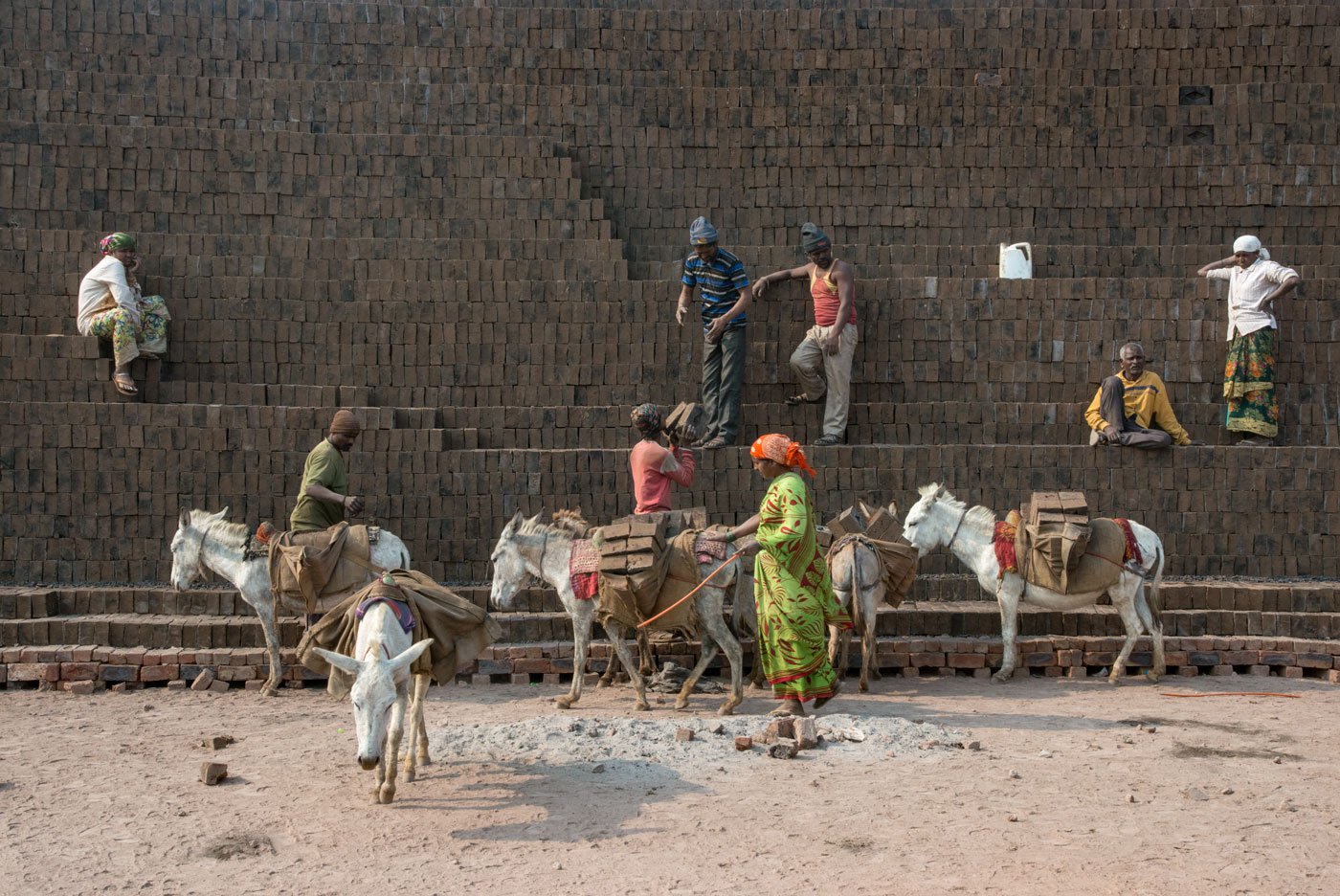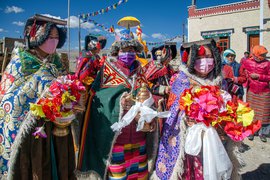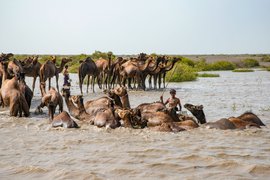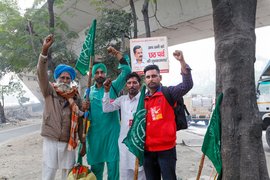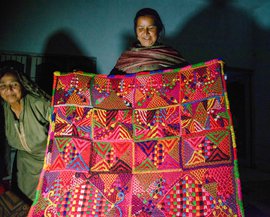“Fourteen, sixteen, eighteen…” Khandu Mane stops counting the raw bricks he’s placing in the panniers on Aththhya’s back. And then instructs the donkey: “Chala…phrrrr…phrrr.. .” Aththhaya and two other laden donkeys start walking the roughly 50-metre distance towards the bhatti (furnace). The bricks will be unloaded there for firing.
“Another hour and then we will rest,” Khandu says. But it’s only nine in the morning! Looking at our puzzled faces, he explains: “We started at one o’ clock, in the dark of the night. Our shift ends at 10 in the morning.
Raatbhar he asach chalu ahe
[We have been at it the whole night].”
Four of Khandu’s pack have returned from the
bhatti
with their sacks empty. He starts all over again: “fourteen, sixteen, eighteen…”
Then, suddenly,
“Ruko
…” he calls out to one of his donkeys in Hindi. “Our local donkeys follow Marathi, but this one doesn’t. He is from Rajasthan. We have to instruct him in Hindi,” he says with a hearty laugh. And proceeds to give us a demo:
Ruko
. The donkey stops.
Chalo
. It moves.
Khandu’s pride in his four-legged friends is apparent. “Limboo and Pandharya are out grazing, and so is my favourite, Bullet. She is tall and elegant and superfast!”
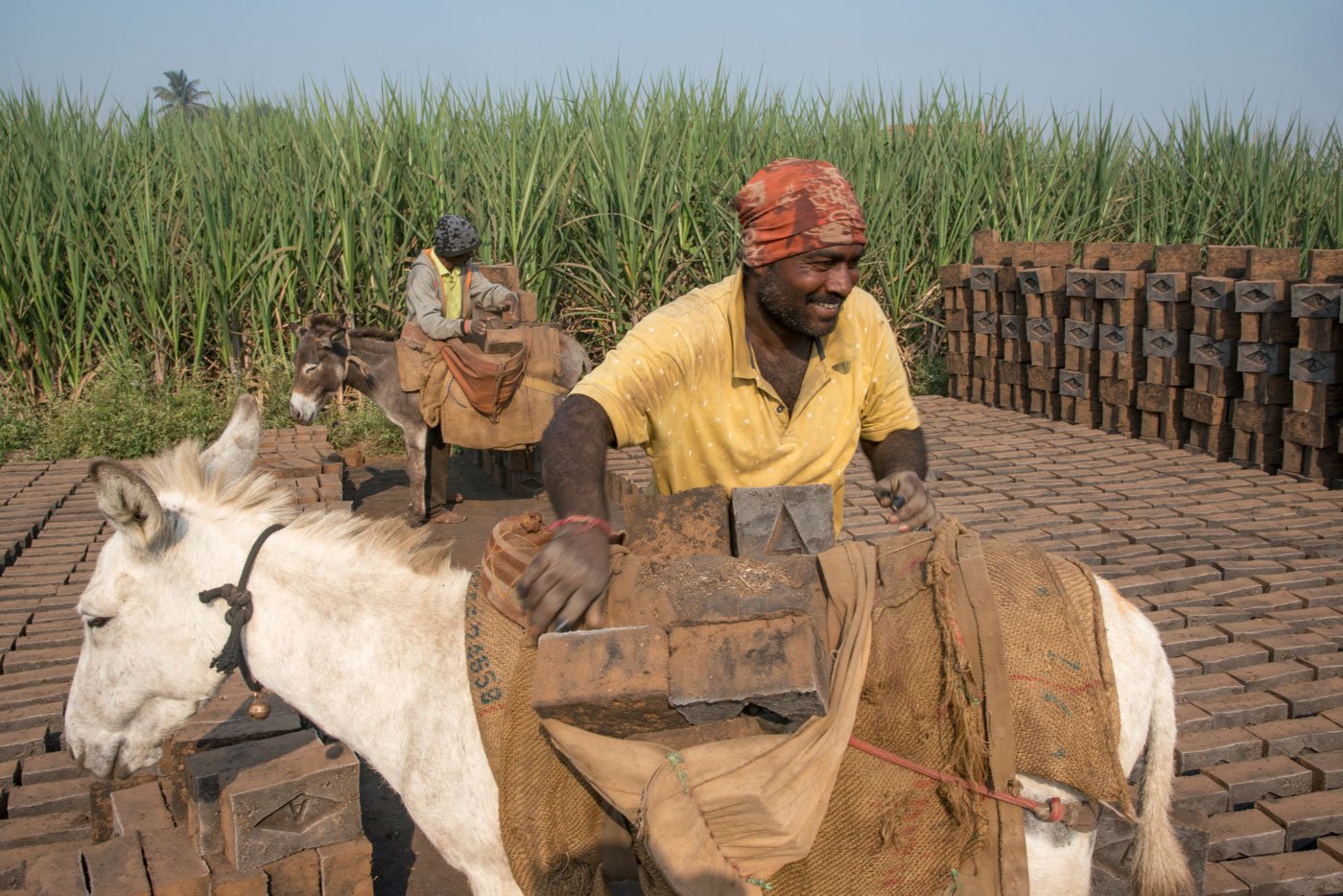
Khandu Mane loads bricks on Aththhya’s back at a brick kiln near Jotiba Mandir area of Sangliwadi, on the outskirts of Sangli city
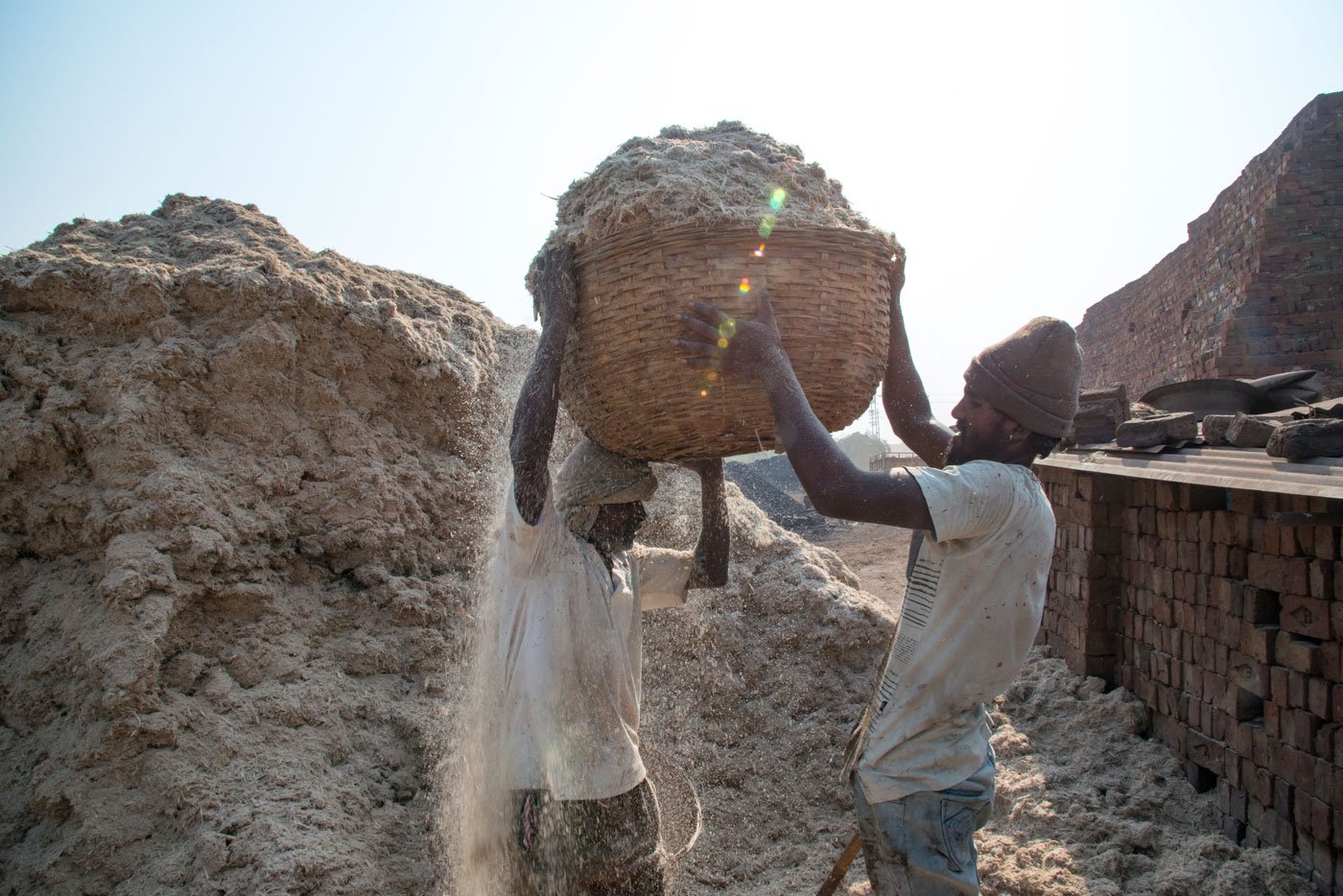
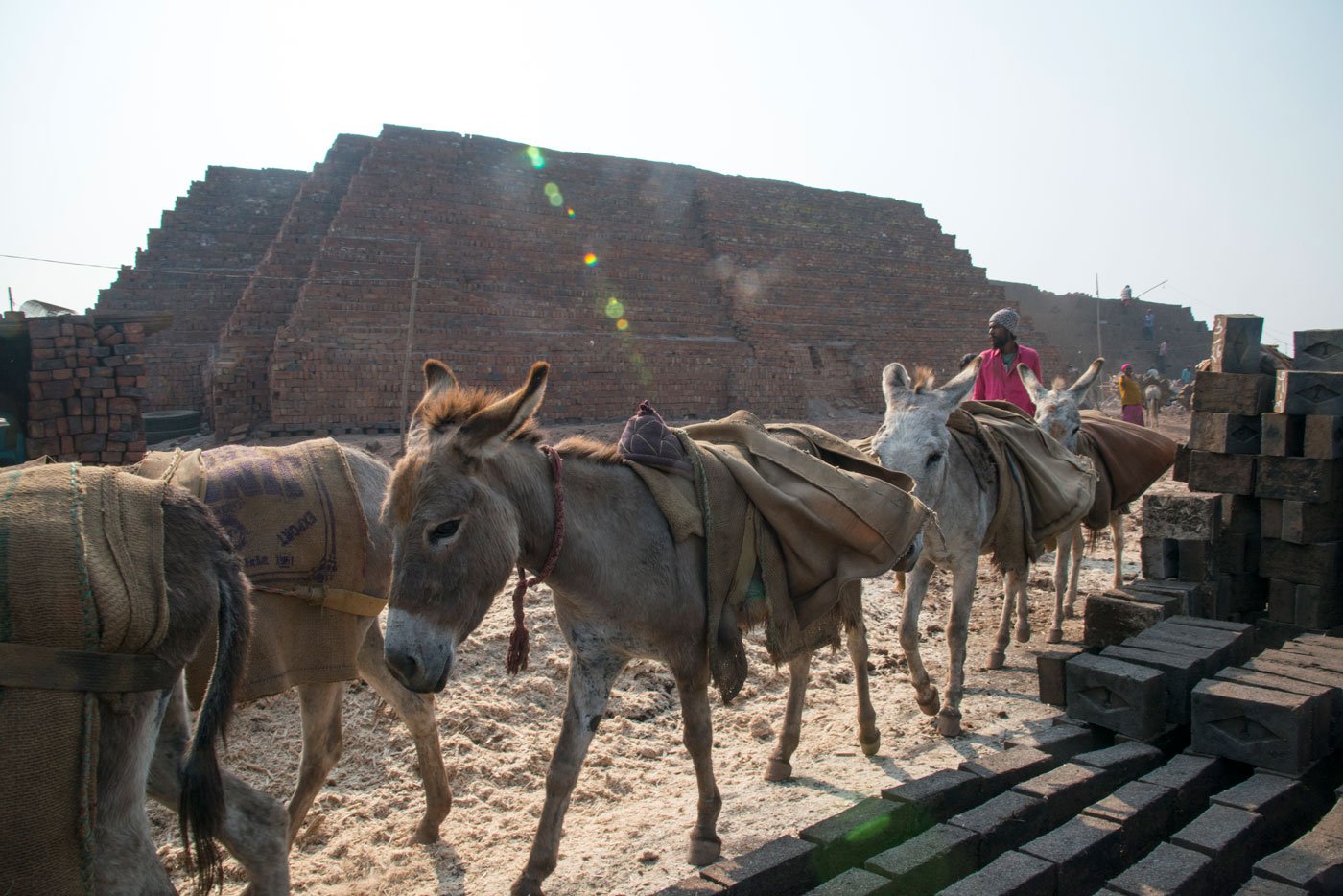
Left: At the kiln near Jotiba Mandir, Vilas Kudachi and Ravi Kudachi, migrant workers from Athani taluk in Karnataka's Belgaum district, lift a load of sugarcane bagasse, which will be used for making bricks. Right: Donkeys returning for more bricks after dropping off a load
We met him in a brick kiln near Sangliwadi, a locality on the outskirts of Maharashtra’s Sangli city. The area around the Jotiba Mandir there is dotted with brick kilns – we counted about 25.
The sweet smell of dry sugarcane bagasse – used in brick production – mixed with smoke billowing from the kilns, fills the morning air. At each kiln, we see men, women, children and donkeys, working like clockwork. Some are mixing clay while others are moulding bricks; some are loading them and others are unloading and stacking.
Donkeys come and donkeys go, in pairs of two…four…six…
“We have raised donkeys since generations,” Khandu says. “My parents did it, my grandparents did it, and now I do it.” Originally from Pandharpur block of Solapur district – about 150 kilometres away from Sangli city – Khandu, his family and their donkeys migrate to Sangli from their village, Velapur, during the brick-kiln season every year (November-December to April-May).
We see Madhuri, Khandu’s wife, busy at the
bhatti
, unloading and stacking the raw bricks dropped off by the donkeys. The couple’s daughters, Kalyani, Shraddha and Shravani, 9 to 13 years old, are walking with the donkeys, leading them to their destination. The girls’ brother, who is 4-5 years old, is sitting close to his father, with biscuits and tea.
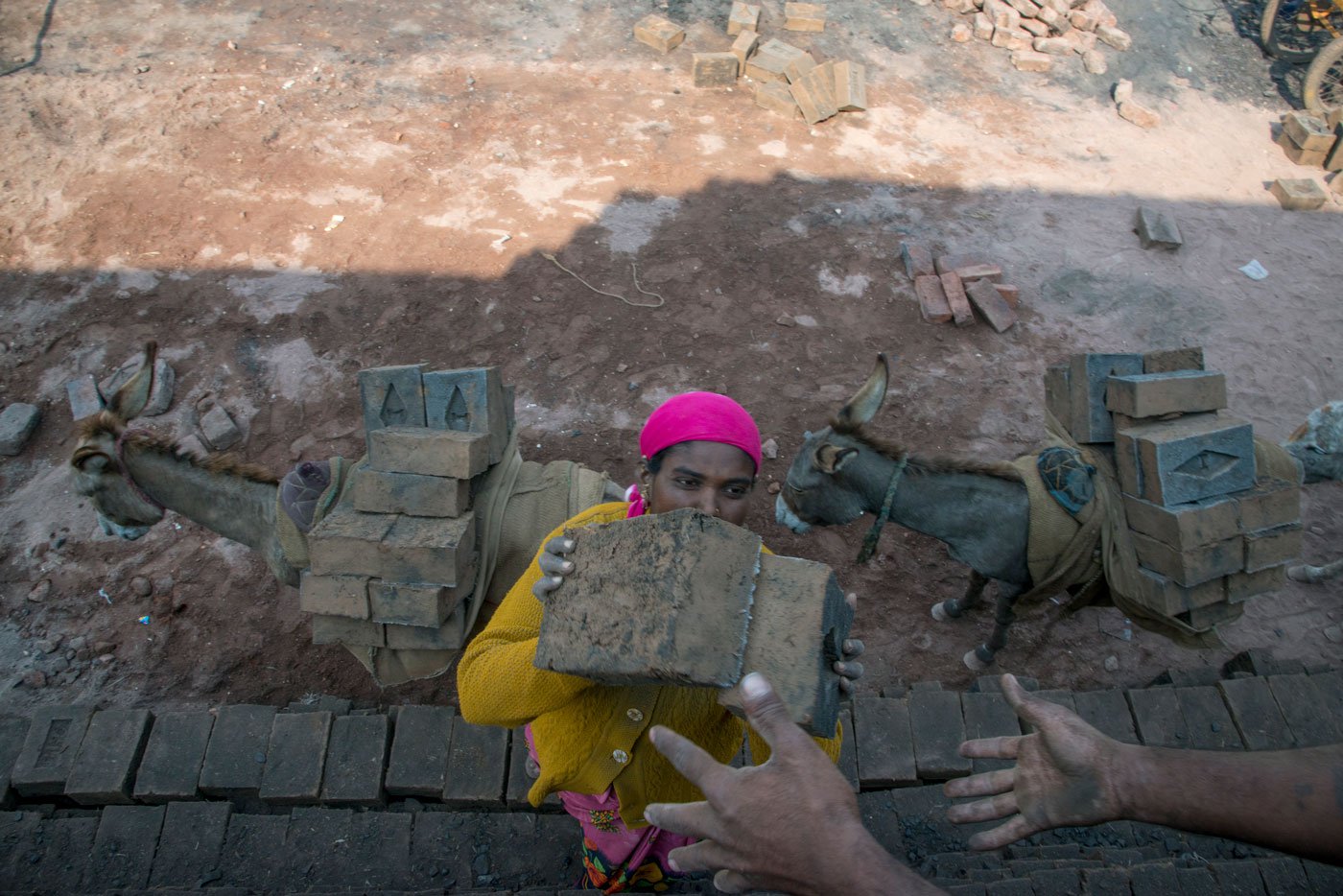
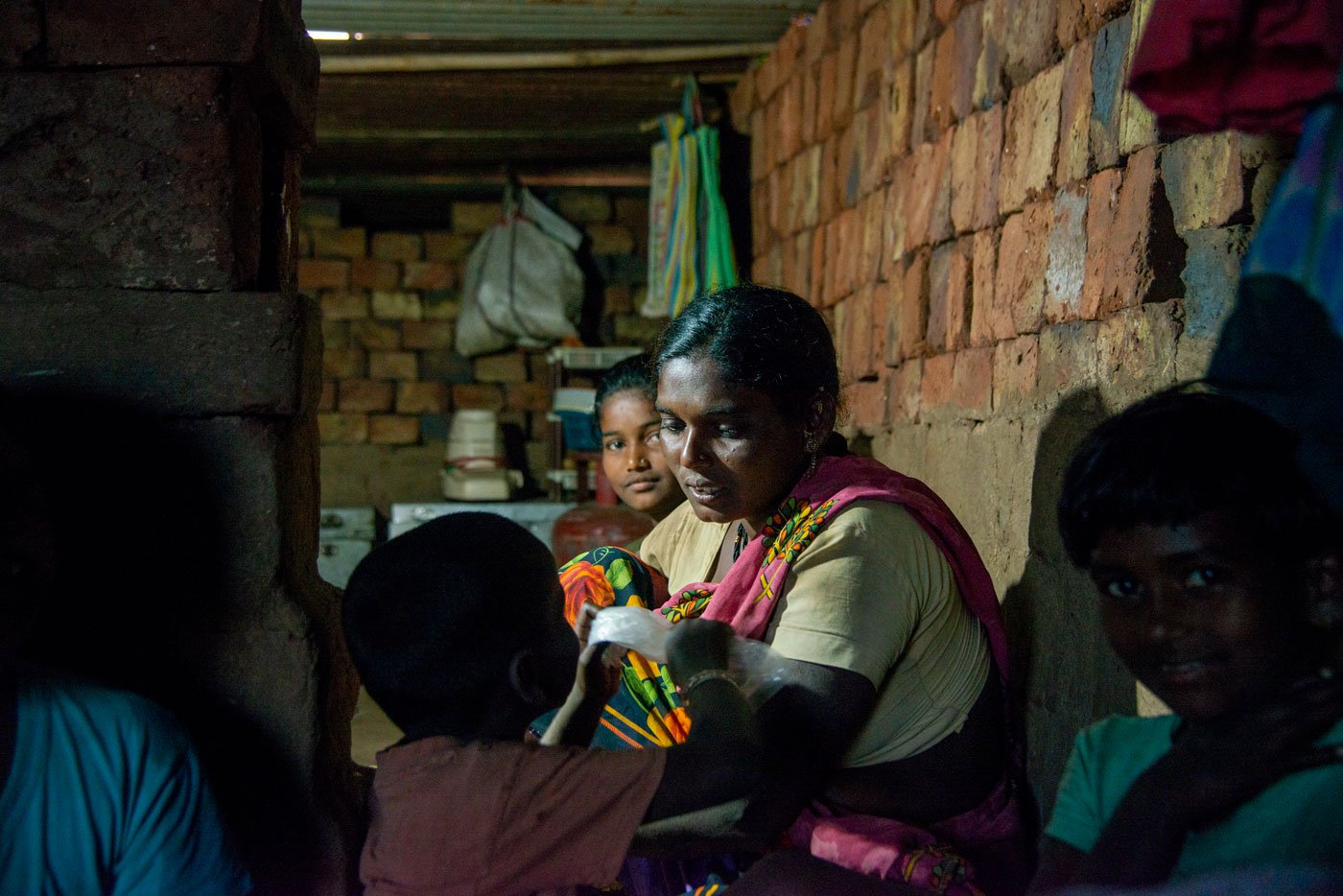
Left: Madhuri Mane throws a pair of the unloaded bricks towards a worker, who then stacks them in a row. Right
:
Madhuri and her children in their cramped house at the brick kiln.The
makeshift
structure is made with loosely stacked bricks, with asbestos sheets for a roof. There is no attached toilet, and no electricity during the day
“Shravani and Shraddha study at a residential school in Sangli, but we had to pull them out now to help us,” says Madhuri as she transfers the bricks, two at a time. “We had hired a couple [husband and wife] to assist us. They took an advance of 80,000 rupees and ran away. Now we have to finish all this in the next two months,” she says, and hurriedly gets back to work.
Each brick that Madhuri is unloading weighs at least two kilos. She throws them in the direction of another worker, who’s standing on a towering stack of bricks.
“Ten, twelve, fourteen…” He counts, bending to catch them swiftly, and adds them to the row of bricks waiting to be fired in the
bhatti
.
*****
Every day, just after midnight until about 10 a.m., Khandu, Madhuri and their children together load and unload about 15,000 pieces. These are transfered by their pack of 13 donkeys, each of whom carries a weight of nearly 2,300 kilos in a day. The animals walk, along with a herder, about 12 kilometres in total.
Khandu’s family earns Rs. 200 for every 1,000 bricks taken to the
bhatti
. This is adjusted against the advance paid to them by the brick kiln owner to work for six months. This past season, Khandu and Madhuri received Rs. 2.6 lakhs – Rs. 20,000 per donkey – as prepayment.
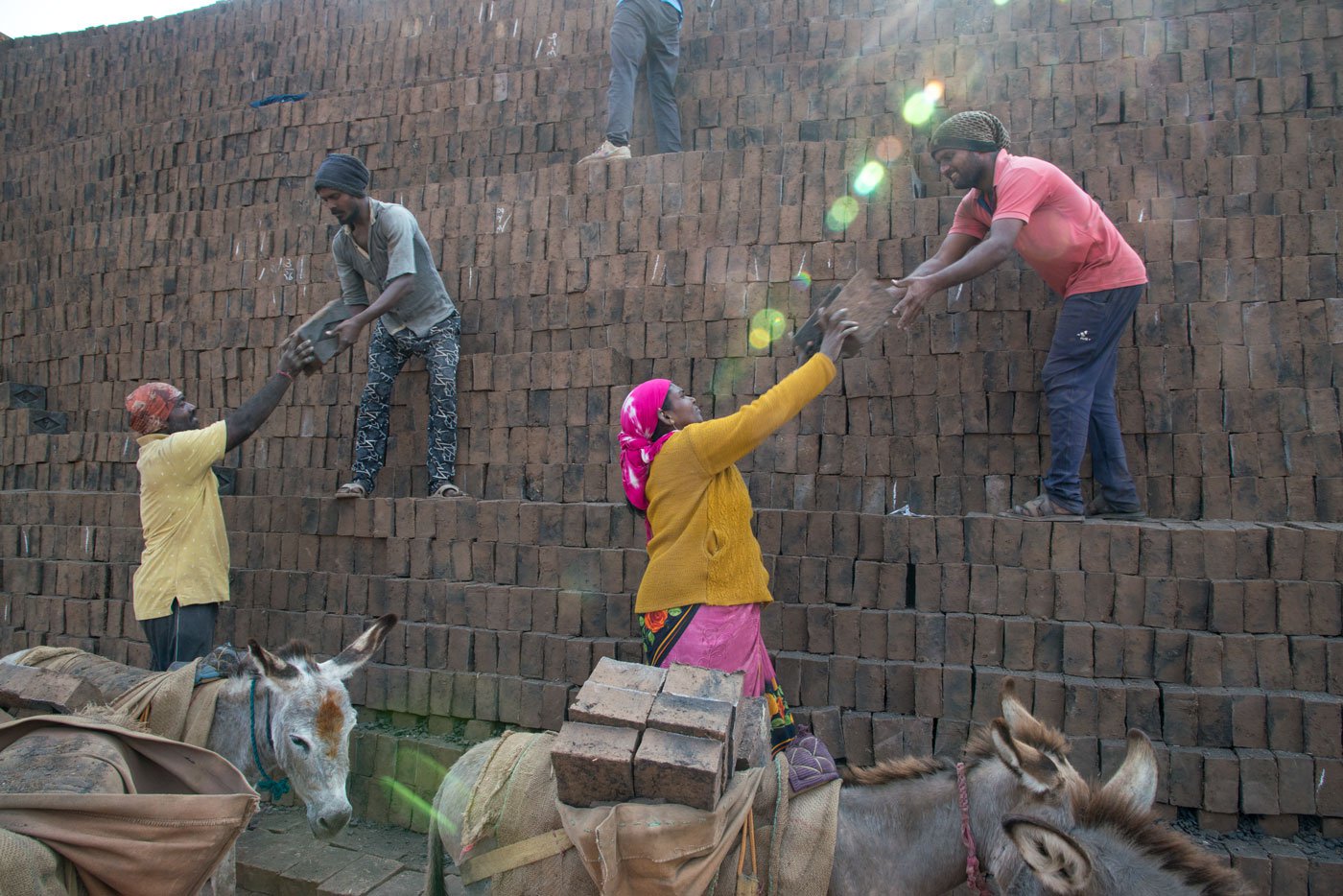
Madhuri and her husband Khandu (in the yellow t-shirt) unload the bricks transported by their donkeys, and pass them to the stackers
“We usually calculate 20,000 rupees per animal,” confirms Vikas Kumbhar, his mid-20s, who owns two brick kilns in Bamabavade in Kolhapur district, 75 kilometres away from Sangli. “All payments [to the herders] are in advance,” he says. More the donkeys, more the advance.
The final settlement is based on the total bricks handled in the six-month period, minus the advance paid and other deductions. “We adjust against their output, weekly payments for groceries [Rs. 200-250 per family], and any other expenses,” Vikas says. And if the herders cannot work off the advance that season, they carry the debt forward, to the next season, he explains. Some like Khandu and Madhuri set aside a portion of their advance to hire help.
*****
“There are around 450 brick kilns between Palus to Mhaisal in Sangli district, along the banks of Krishna river,” says a field worker of Animal Rahat, an animal welfare organisation working in the area. Sangliwadi falls almost in the middle of this riverbank stretch of 80-85 kilometres. “More than 4,000 donkeys work in the kilns,” adds his colleague. The team of two are on a routine visit to check on the donkeys’ well being. Their organisation also runs an emergency ambulance service and provides critical health care for animals.
At the end of the day’s shift, we see many donkeys running towards the river near Jotiba Mandir. Young male herders on motorcycles and cycles are taking them to graze. Most of the animals scavenge on the waste dumps in the area, and their herders lead them back in the evening. Though Khandu, Madhuri and the others who keep donkeys say they provide feed to their livestock, it was nowhere to be seen.
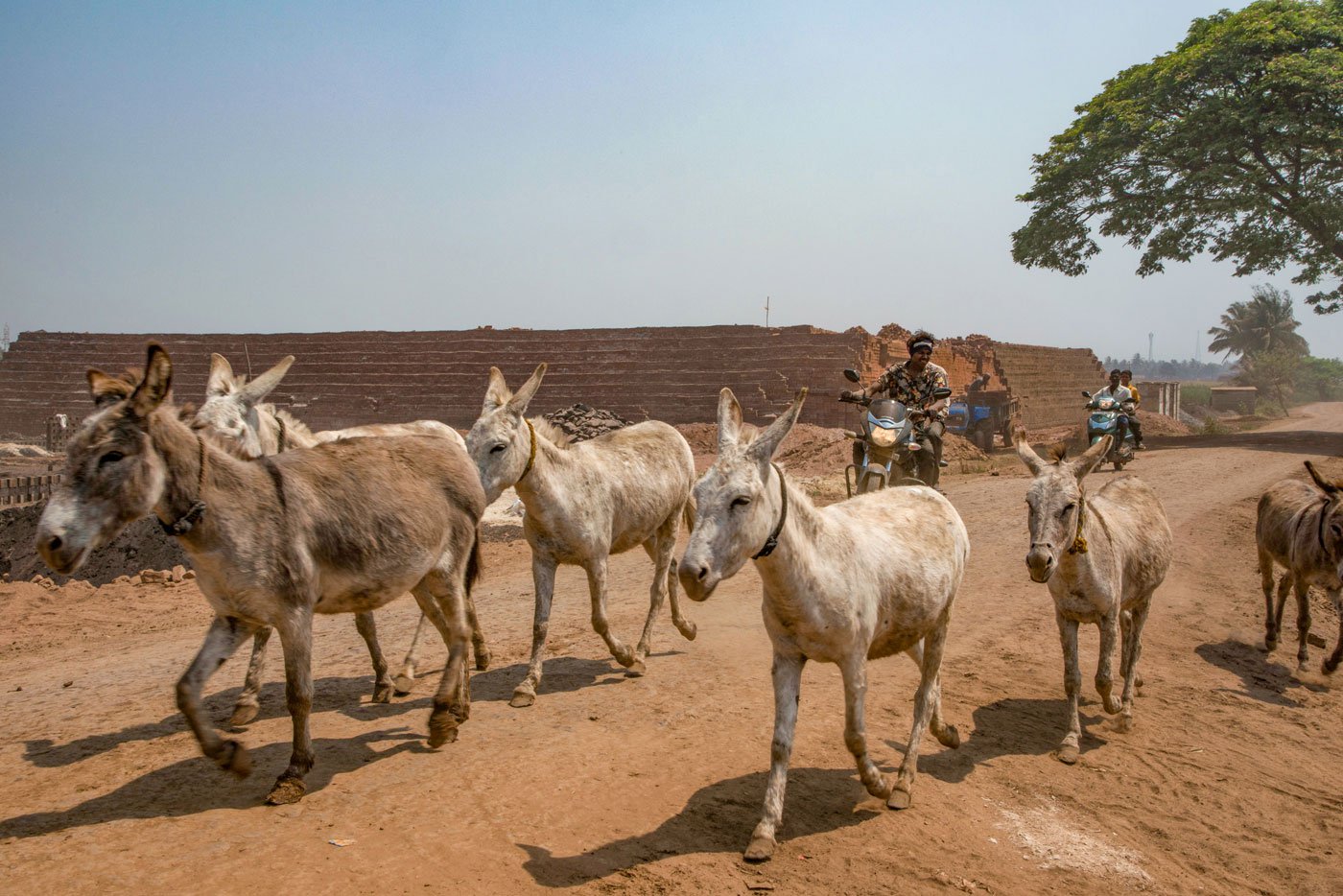
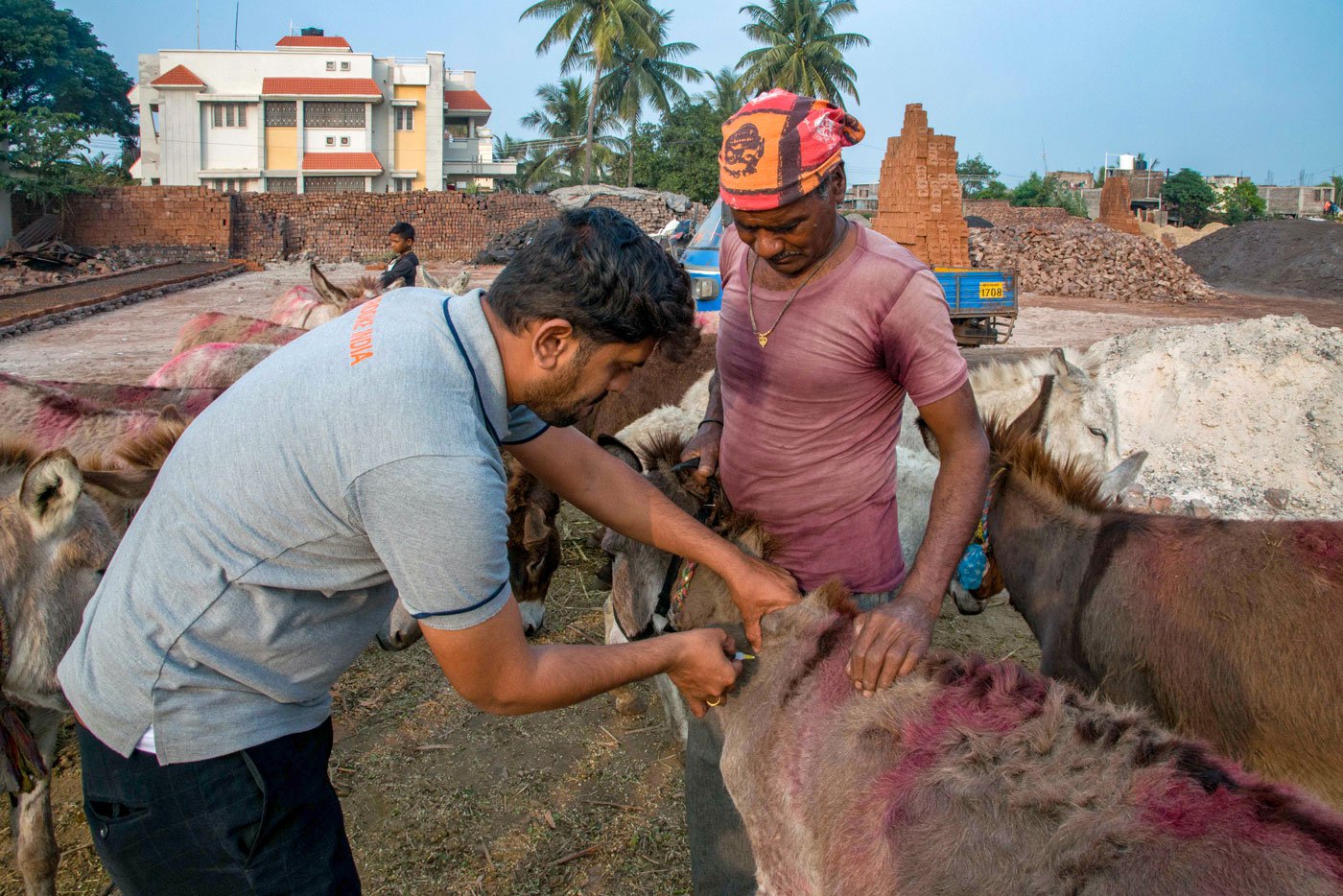
Left: A group of donkeys being taken to graze by their herder, who is following the animals on his motorcycle. Right: A worker from an NGO providing veterinary support to herders injecting medicine into a donkey from Jagu Mane's pack
“We rent two guntha [about 0.05 acres] of farmland every year for our animals to feed on grass and kadba [dry stalks of jowar ],” says 45-year-old Janabai Mane. The rent is Rs. 2,000 [for six months]. “But, see, our life depends upon them. If they don’t get food, how will we eat well?”
She finishes her lunch while speaking to us in her metal-roofed house. The walls are made of loosely stacked bricks, and the mud floor is smeared with fresh cow dung. She insists we sit on a plastic mat. “We are from Phaltan [in Satara district] but my donkeys simply do not have any work there. So we have been working here in Sangli for the past 10-12 years.
Jithe tyanna kaam, tithe amhi
[We go where their work is],” says Janabai, whose family of seven lives in Sangli all year round, unlike Khandu and his family who migrate seasonally.
Janabai and her family recently bought 2.5
guntha
of land (about 0.6 acres) on the outskirts of Sangli city. “The recurrent floods are fatal for my animals. So we bought hillside land. We will build a house where the donkeys will be on the ground floor and we can stay on the first,” she says as her grandson comes and sits in her lap, looking happy. She also rears goats; we could hear them bleat while they waited for fodder. “My sister gifted me a she-goat. Now I have 10,” Janabai says in a pleased tone.
“It is getting more and more difficult to rear donkeys now,” she says. “We had 40 of them. One from Gujarat died of a heart attack. We could not save him.” They own 28 donkeys now. A veterinary doctor from Sangli visits once or twice every six months to see the animals. But in the last three months alone, the family has lost four donkeys – three to something toxic they ate while grazing and one in an accident. “My parents’ generation knew herbal medicines. But we don’t,” says Janabai. “Now we simply go to a shop and buy bottles of medicines.”
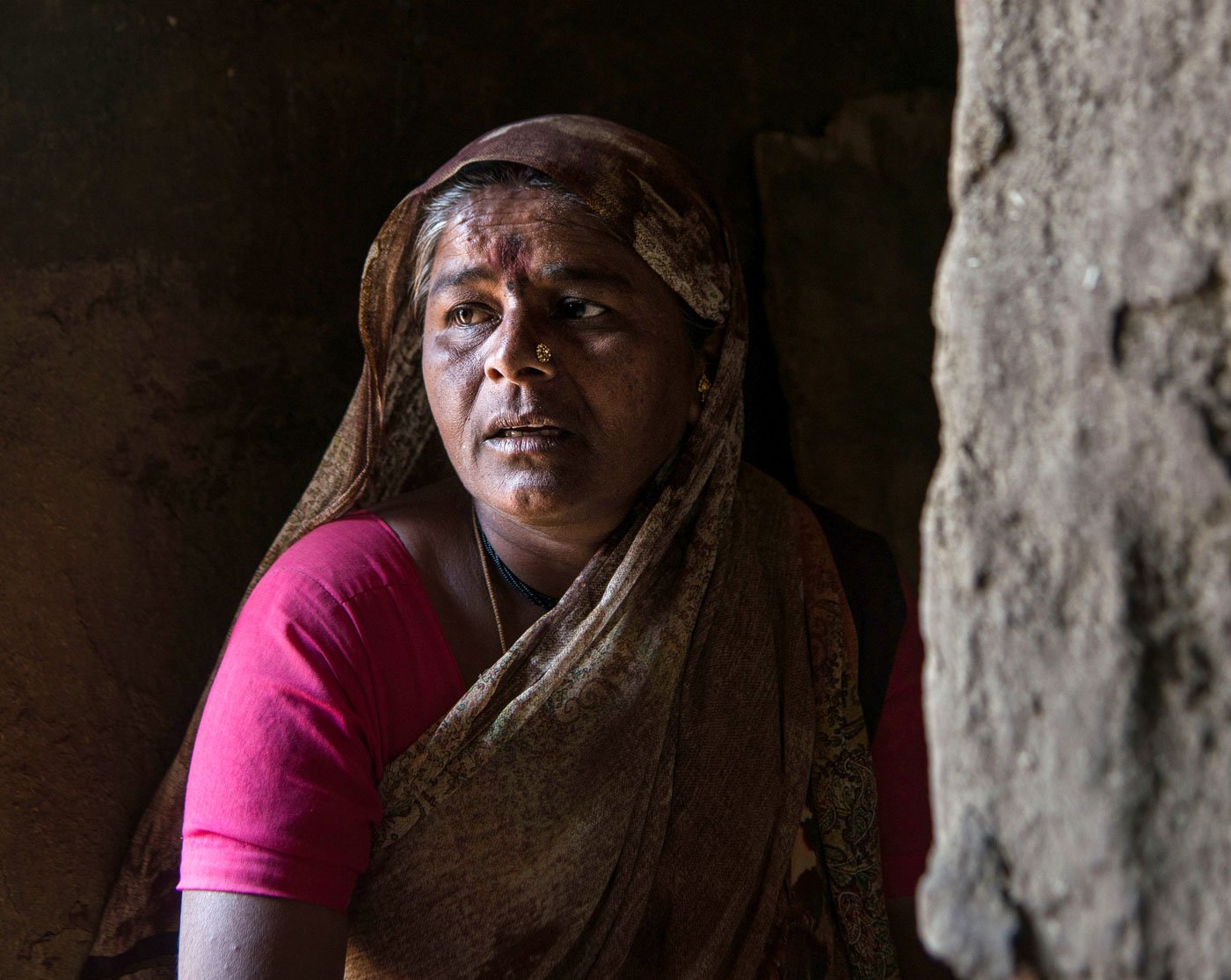
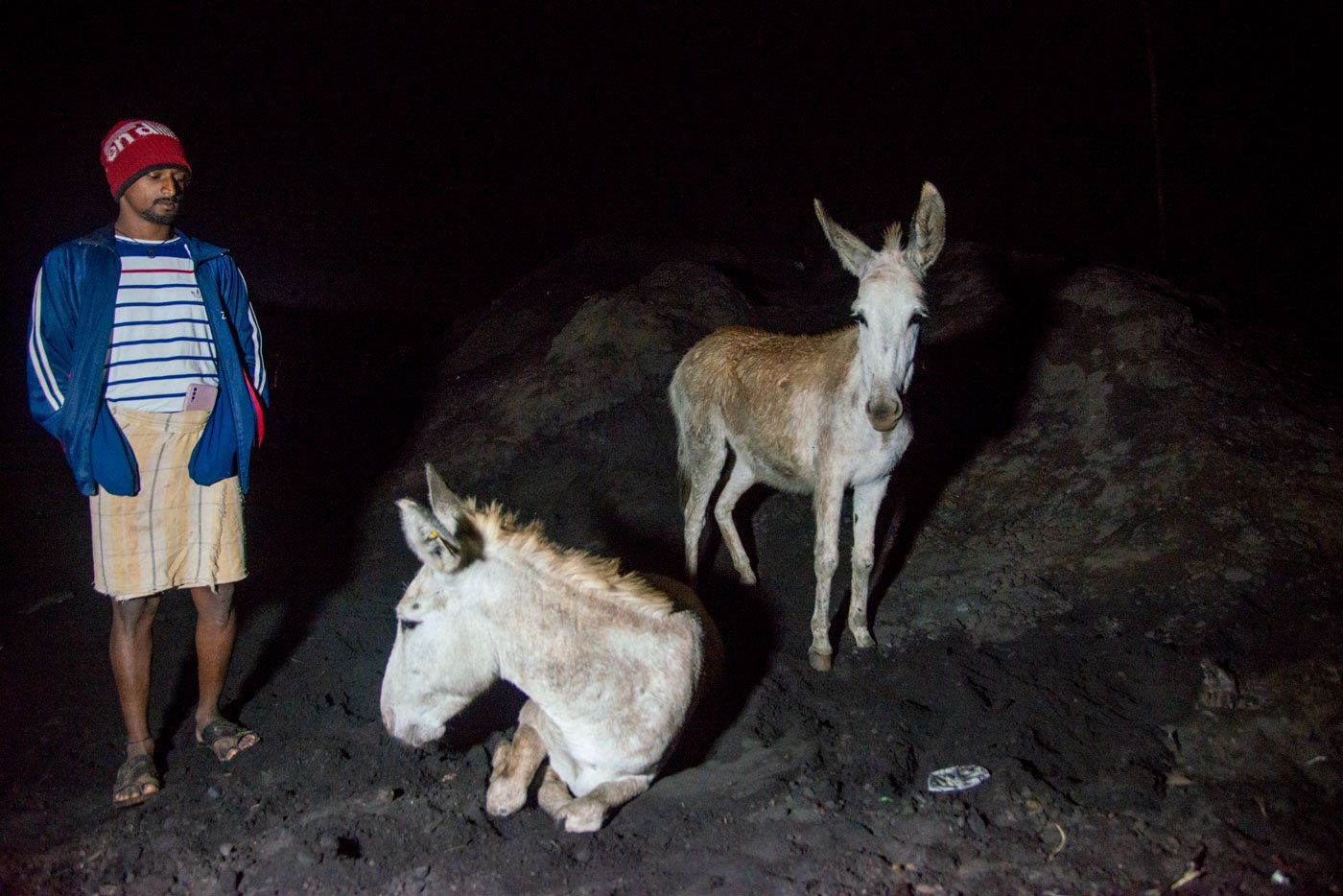
Left: Janabai Mane and her family own 28 donkeys in Sangli. ‘It is getting more and more difficult to rear donkeys now.' Right: Her son Somnath Mane checks on the donkeys before they start the day's work
*****
In Maharashtra, donkeys are raised and herded by several groups, including Kaikadi, Beldar, Kumbhar and Vadar. The Kaikadi community – to which Khandu, Madhuri and Janabai belong – was among the nomadic tribes declared ‘criminal’ by the British. These were ‘denotified’ after the colonial Criminal Tribes Act was repealed in 1952, but they face stigma even today and are looked upon with suspicion in society. Traditionally, the Kaikadis made baskets and brooms. The community is now listed as Vimukta Jati (Denotified Tribe) in most parts of Maharashtra, except in eight districts of the Vidarbha region where it is classified as Scheduled Caste.
Many of the Kaikadis who raise donkeys as livestock buy their animals from Jejuri in Pune district or Madhi in Ahmadnagar district. Some also visit the donkey markets in Gujarat and Rajasthan. “A pair costs 60,000 to 120,000 rupees,” Janabai says. “A donkey without teeth costs more,” she adds, referring to the age of the animal, which can be made out from its teeth. The first set of donkey teeth develop within the first few weeks of life, but they fall out slowly and are replaced by permanent adult teeth when they are about five years old.
It is concerning, however, that India’s donkey population has declined drastically in the last decade. Between 2012 and 2019, their numbers fell by 61.2 per cent – from 3.2 lakh donkeys recorded in the Livestock Census of 2012, to 1.2 lakhs
in 2019
. In Maharashtra, which has the second highest donkey population – 17,572 according to the 2019 Livestock Census – the population had reduced by about 40 per cent in the same period.
The sharp drop prompted Brooke India, a not-for-profit animal welfare organisation, to commission an
investigative study
by journalist Sharat K Verma. His report identifies several reasons for this decline – reduced utility of the animals; communities opting out of rearing them; automation; decrease in grazing land; illegal slaughtering; and theft.
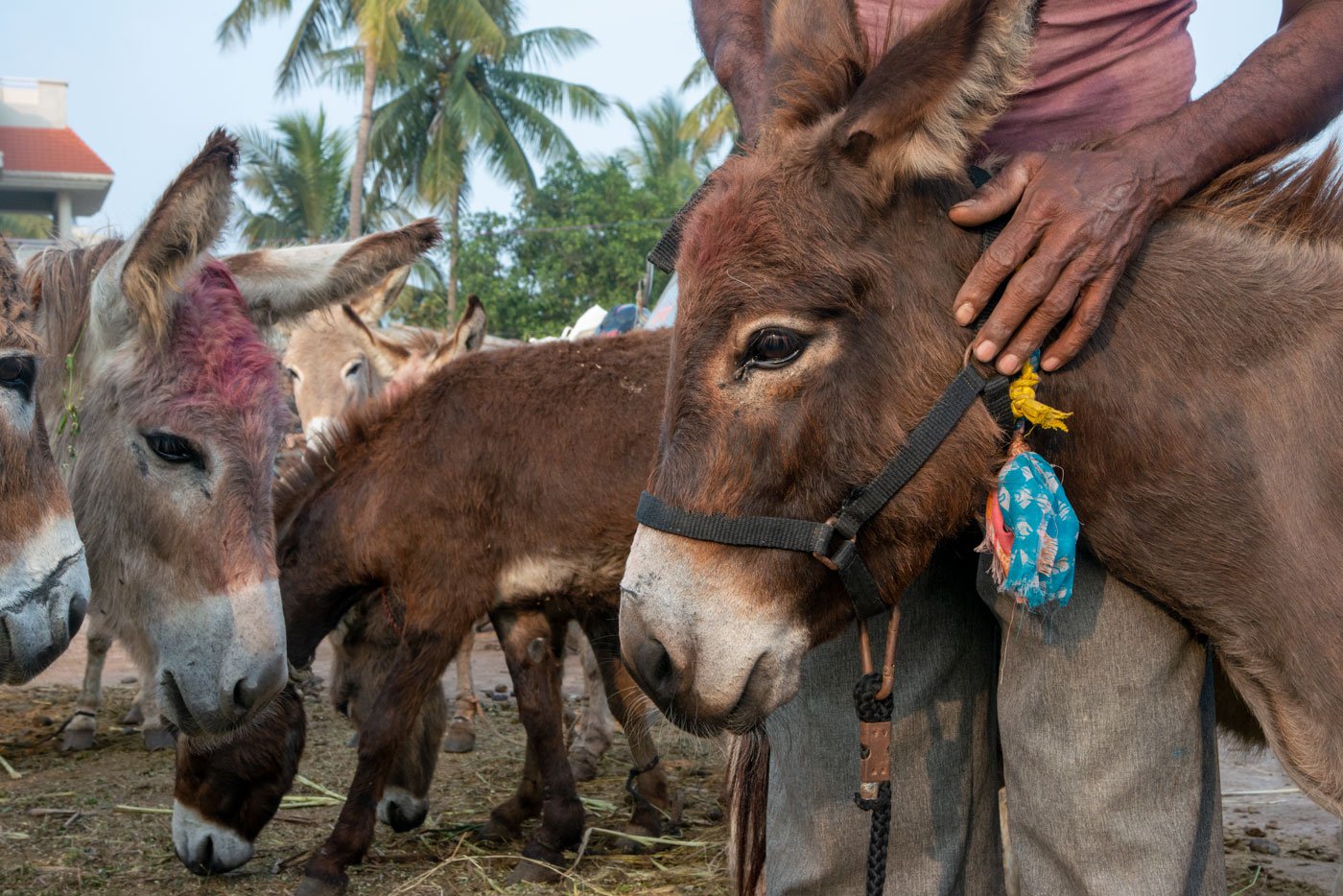
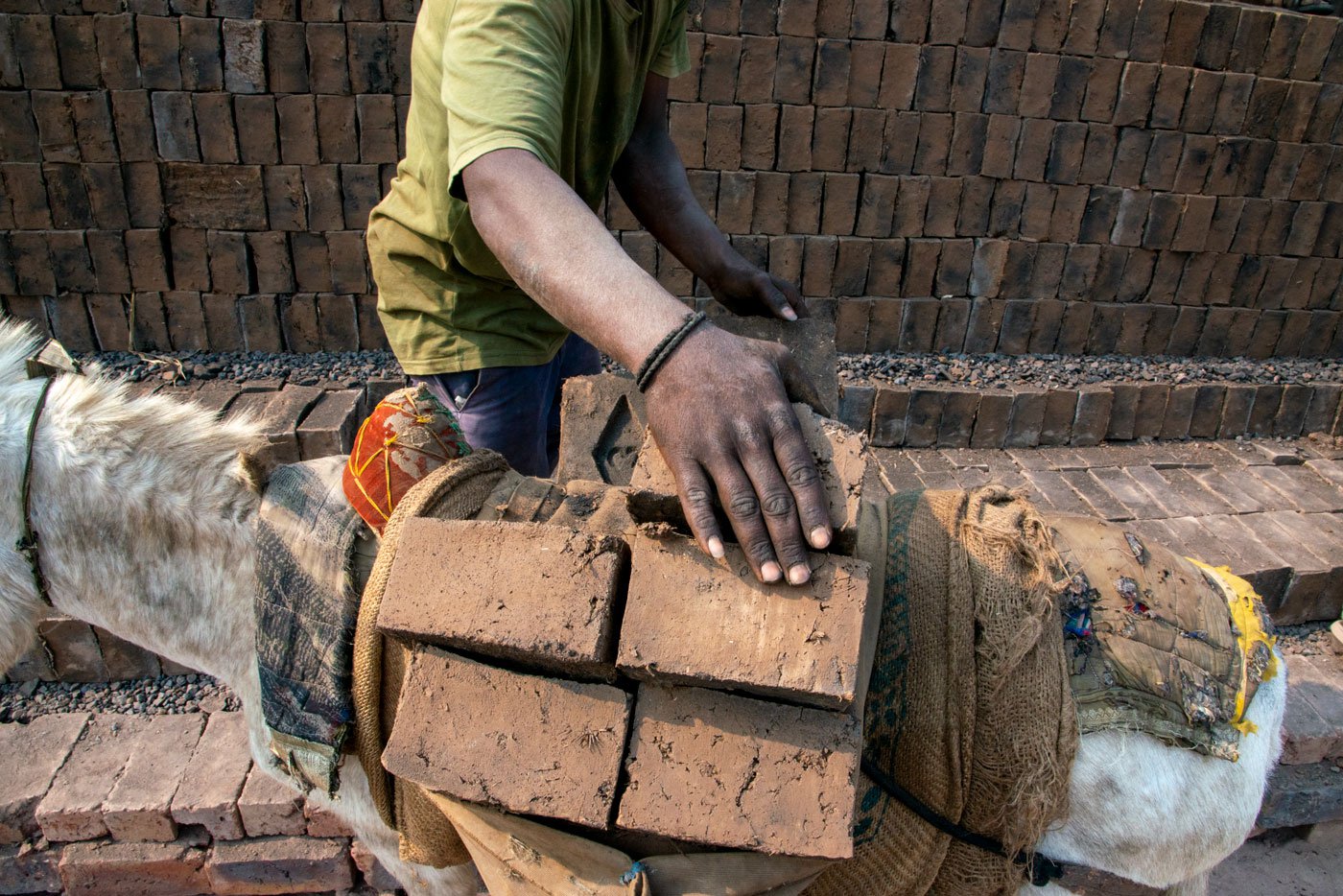
Left: A herder petting his donkey. Right: A worker unloading bricks at a kiln in Laxmi Mandir area of Miraj town
“There is a demand for donkey meat in the southern states, especially in Guntur region of Andhra Pradesh,” says to Dr. Sujit Pawar, the Sangli-based programme coordinator of Brooke India. Verma’s study notes that the illegal slaughter of donkeys for meat is rampant in several districts of Andhra. Besides being cheaper, the meat is believed to have medicinal value and increase virility in men.
Donkey skin is periodically smuggled out to China, adds Pawar. It is an essential ingredient for a traditional Chinese medicine called ‘ejiao’ and so in great demand. The report released by Brooke India draws a link between slaughtering and thefts of donkeys. It concludes that the rise in donkey hide trade, fostered by demand from China, is the reason why the animals are on the verge of extinction in India.
*****
Babasaheb Baban Mane, 45, lost all his 10 donkeys to theft six years ago. “Since then, I have been stacking bricks, earning less [than before].” While the donkey herders are paid Rs. 200 for every 1,000 bricks, brick stackers get only Rs. 180. (The extra 20 to herders is given for animal feed, Madhuri had told us.) We met Babasaheb in at a kiln about 12 kilometres from Sangliwadi, located near Laxmi Mandir area of Miraj town. “A trader once lost 20 donkeys from Mhaisal phata ,” he says, recalling another theft that occurred less than 10 kilometres from this kiln. “I think they drug the animals and put them in their vehicles.” Two years ago, seven of Janabai’s donkeys were stolen when they were out grazing.
Thefts of donkeys are on the
rise
in Sangli, Solapur, Beed and other districts of Maharashtra, causing economic hardship to herders like Babasaheb and Janabai, whose income depends on the herd strength. “The thieves stole five donkeys from my herd,” says Jagu Mane, who works at the brick kiln in Miraj. That translates to a loss of about Rs. 2 lakhs. ”How am I supposed to overcome the loss?”
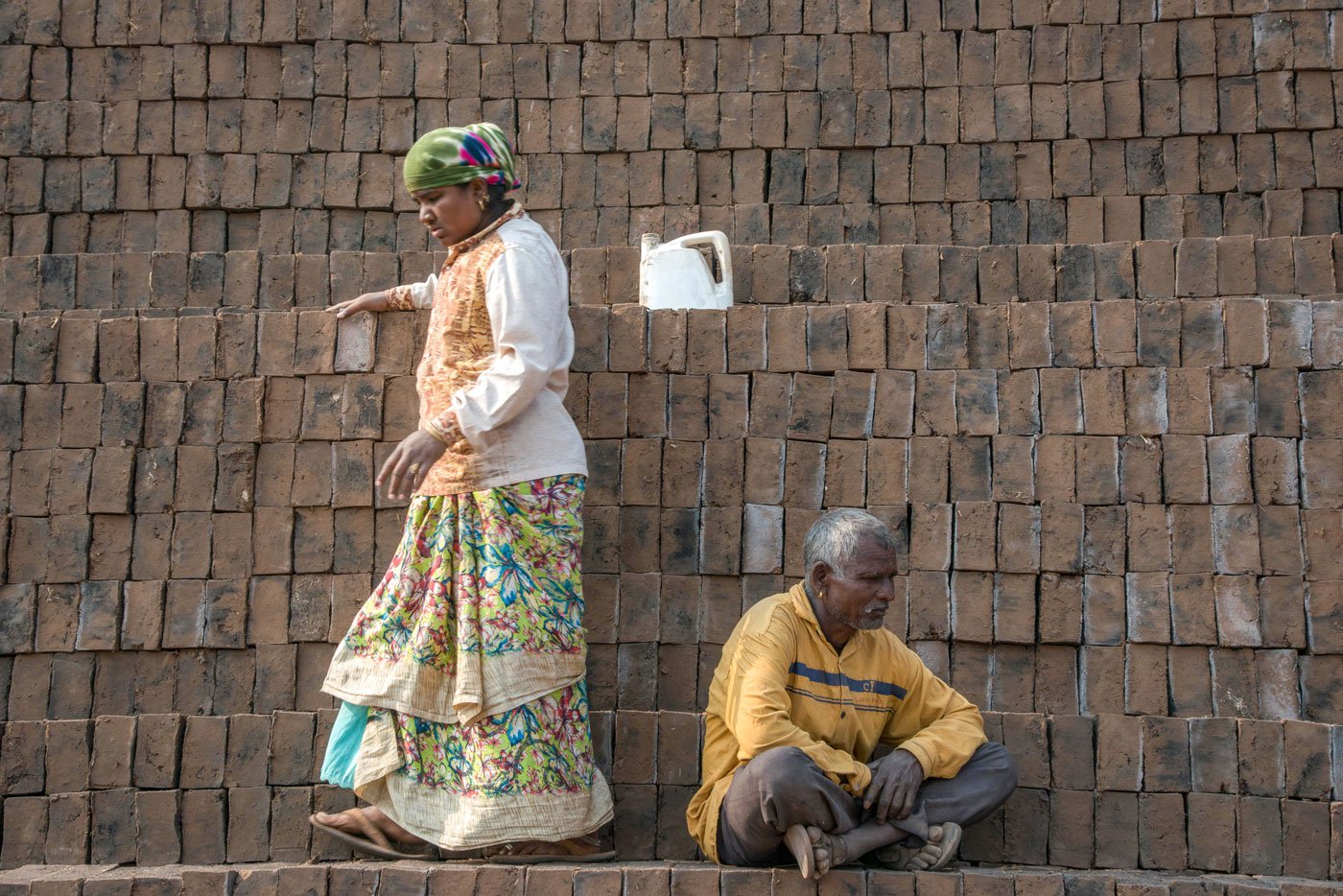
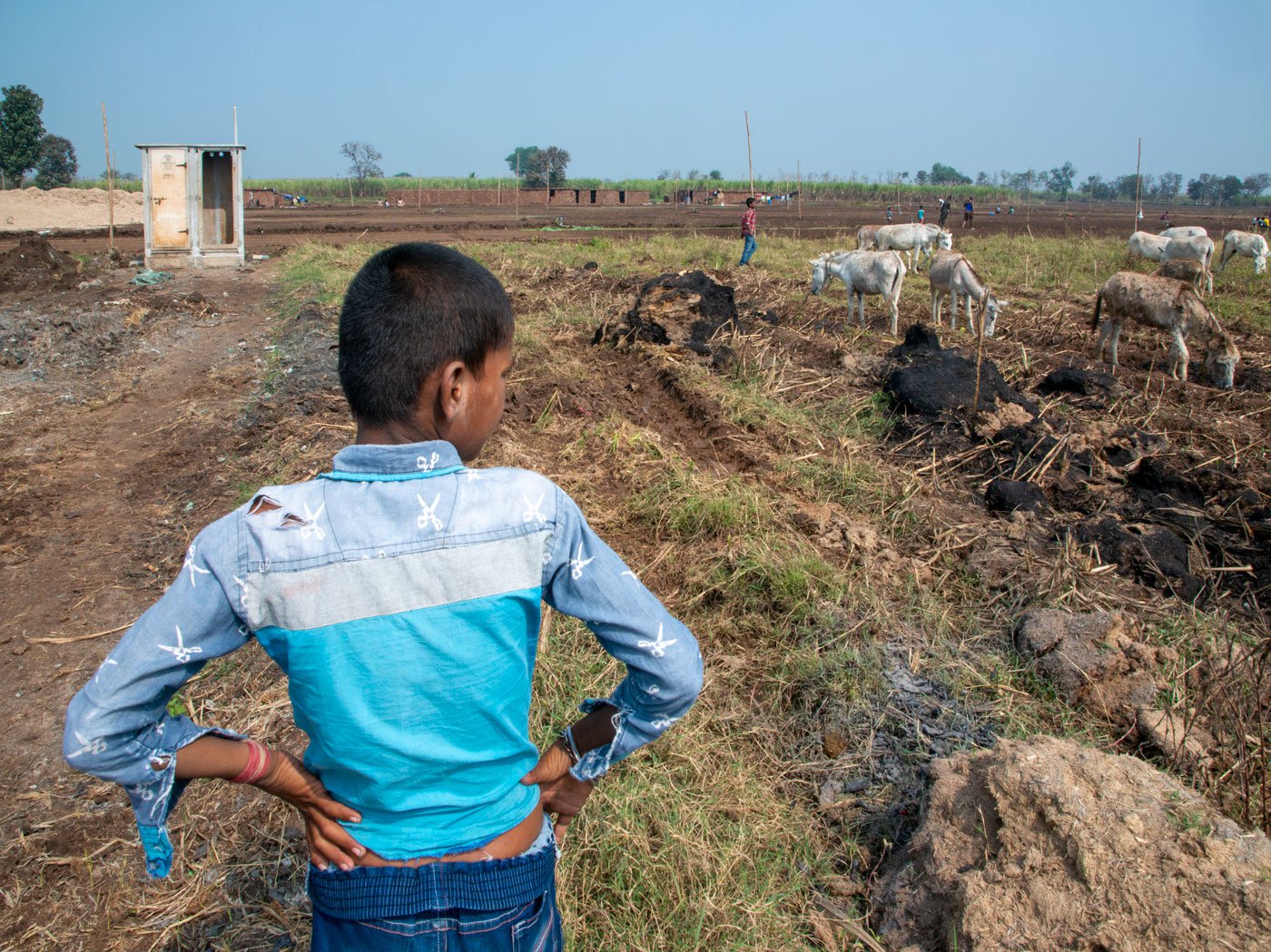
Left: Babu Vitthal Jadhav (in the yellow shirt) takes a break on a stack of bricks at the kiln in Miraj. Right: Ramesh Mane, a 13-year-old boy from the Kaikadi community, watches over his donkeys grazing in a field of grass and dry stalks
But Pawar feels donkey owners are complacent, too, leaving their pack out in open the whole day with no one to keep an eye on them. “There’s no protection. They bring the donkeys back only when it’s time to work. In the meantime, if something goes wrong, there's no one to look after [the animals].”
While speaking to Babasaheb, we see Babu Vitthal Jadhav bringing his four donkeys to unload bricks. Babu, 60, who belongs to the Kaikadi community too, has been working at brick kilns since the last 25 years. Originally from Patkul in Mohol block of Solapur district, he migrates to Miraj for six months in a year. He looks tired, and sits down. It is about 9 a.m. Cracking jokes with Babasaheb and two women workers, Babu rests for the day as his wife takes over the work. They have six donkeys, which look thin and overworked. Two have injuries on their legs. It will be a couple of hours before their shift ends.
With just one day off in a month – on Amavasya (new moon night) – everyone is drained and exhausted. “If we take a break, who will take the bricks for baking?” Madhuri asks, back in Jotiba Mandir. “If we don’t carry the dried bricks, there is just no place to lay the new ones. So we can’t take a break. Amavasya is our only day off for six months,” she said. The kilns remain shut on Amavasya as the lunar phase is considered inauspicious. Other than this, the labourers and donkeys get three holidays, for Hindu festivals, during the season: Shivaratri, Shimga (celebrated as Holi elsewhere) and Gudhi Padawa (the traditional new year).
By noon, most of the workers are back in their makeshift homes near the kiln. Shravani and Shraddha have gone to wash clothes at a tap nearby. Khandu Mane has taken the donkeys out for grazing. Madhuri will now cook for the family and try to get some sleep in the sweltering heat. The
bhatti
is shut for the day. “The money [income] is good, and we have enough to eat,” Madhuri says, “But just no sleep, you know.”
Ritayan Mukherjee reports on pastoral and nomadic communities through an independent travel grant from the Centre for Pastoralism. The Centre for Pastoralism has not exercised any editorial control over the contents of this reportage.
